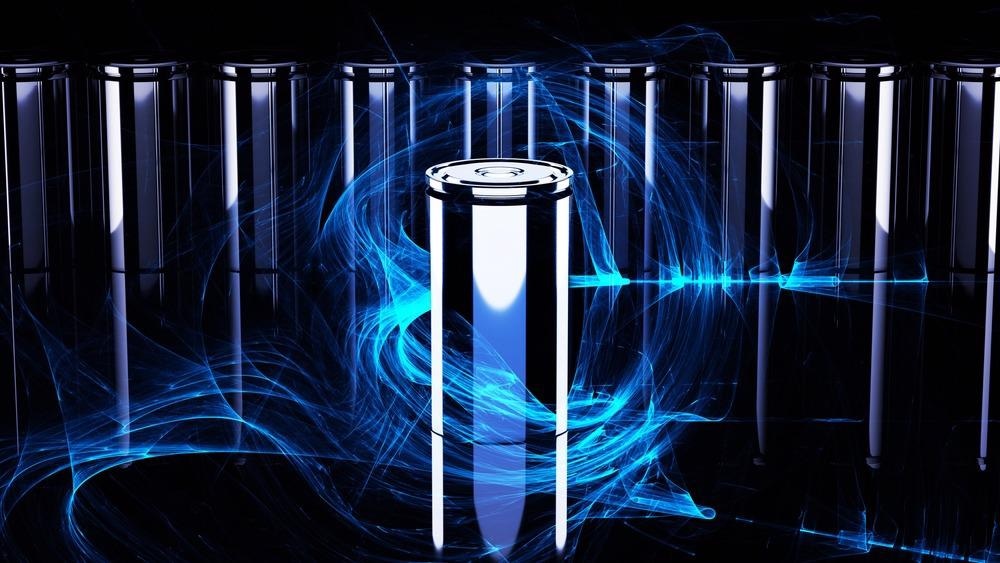Considering lithium-oxygen batteries (Li-O2) have a better power density than lithium-ion batteries, they are a popular alternative. A new article in the journal ACS Applied Energy Materials discusses the effects of water on aprotic lithium-oxygen batteries, such as the use of membranes for corrosion prevention and variations in cyclic stability.

Study: Water in Aprotic Li-O2 Batteries: A Critical Review. Image Credit: P5h/Shutterstock.com
With the utilization of photovoltaic, wind, hydroelectric, and other renewable electricity resources, the development of energy production techniques has improved energy efficiency and reduced environmental effect. These advancements in power storage should be followed by the usage of batteries with better energy densities, so extensive research is being conducted in this regard.
A Brief Introduction to Lithium-Ion Batteries
The first lithium-ion batteries were manufactured around 1980 and employed a LiCoO2 electrode, which is still the most commonly used type of material in electronic goods batteries today. A common lithium-ion battery has a maximum energy density of roughly 380 Wh kg-1, with discharging potentials greater than 4 V, although its operational energy density typically ranges from 120 to 220 Wh kg-1, depending on the kind of Li-ion battery.
A Comparison of Lithium Oxygen Batteries with Li-ion Batteries
A lithium-oxygen battery may achieve a conceptual energy density of roughly 11680 Wh kg-1 when lithium metal is oxidized and approximately 3500 Wh kg-1 when lithium and oxygen are integrated. It is far superior to Li-ion batteries. Nonetheless, these systems are still some distance from commercialization due to several hurdles that must be addressed, remaining solely as contenders to substitute lithium-ion batteries in the future.
Factors Affecting LiO2 Batteries
The systemic conversion, absorption of byproducts in the solvent, anodic volatilization, production of insulator agents that hinder oxygenation of the cathode, and excessive overpotentials are all affected by technical obstacles. Some of the variables that can lead to cyclability and significant overpotentials include secondary reactions due to the presence of CO2 and water in ambient air.
This water can infiltrate the solution through an oxygen supply, and its accumulation occurs. Water can react chemically with discharge products, causing simultaneous processes that affect the electrochemical behavior of batteries.
Membranes to Reduce Water Influence
New barriers are being developed to assist with the preservation of a metallic lithium anode, inhibiting its degradation to lessen the effect of water, CO2, and O2 transmission. Owing to their hydrophobicity and selectiveness toward lithium ions, these films, which can be polymer-based or ceramic, allow larger quantities of water in the electrolyte without water damaging the metallic lithium anode.
Does Water Increase Capacity Increment?
The addition of water can considerably boost the discharge capacity of the Li-O2 battery during the first cycle. It is clear to see that when the water concentration in the electrolytes increases, so does the permeability in the first cycle. The usage of hydrophobic conducting Li+ films is the primary approach for preventing water from accessing the anode of the battery.
These films exhibit strong Li+ conductance and low diffusion coefficients for molecules including oxygen, CO2, and water. The most often utilized Li+ conducting films are inorganic ceramic and organic polymer barriers, with ceramic membranes having a higher modulus of elasticity and so remaining more appropriate for stiff cells. Ceramic films are the most often employed in existing research to prevent water passage in Li-O2 cells; nonetheless, these films are costly.
Water Addition Leading to Reduction in Discharge Overpotential
Several writers observed that adding water to the batteries boosts their discharging capability. According to the research, water content has no detrimental influence on overpotential reduction. On the other hand, ruthenium-based catalysts tend to be far more important than the concentration of water in reducing power density.
Cycling Variations Due to Water Addition
The water content addition, both directly to the electrolytes and as humidity, involves alterations in cyclability. Cyclability data was far rarer in the literature, since some research failed to disclose this essential information. In truth, the Li-O2 system is difficult, and obtaining long-term cycling data is considerably more difficult and may not have been in the original plans of numerous writers.
Water can also be added via the O2 feed system. The major distinction is that water entering through the O2 feed produces water buildup in the electrolytic solution, which might affect the shape of the discharge product.
In conclusion, the use of water in aprotic Li-O2 batteries is extremely advantageous since it improves the batteries in various dimensions, especially when combined with certain catalysts.
More from AZoM: How is Fast Fourier Transform Used Alongside Electron Microscopy?
Further Reading
Policano, M. C. 2022. Water in Aprotic Li-O2 Batteries: A Critical Review. ACS Applied Energy. Available at: https://pubs.acs.org/doi/10.1021/acsaem.1c03750
Disclaimer: The views expressed here are those of the author expressed in their private capacity and do not necessarily represent the views of AZoM.com Limited T/A AZoNetwork the owner and operator of this website. This disclaimer forms part of the Terms and conditions of use of this website.